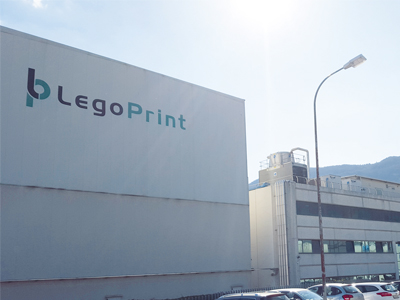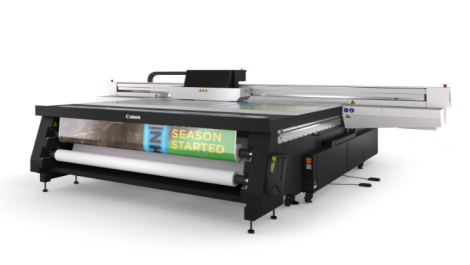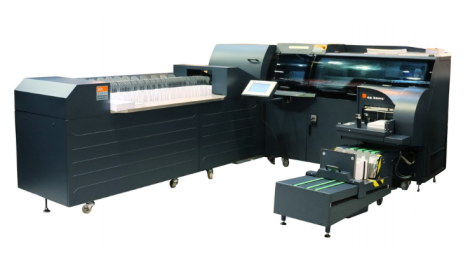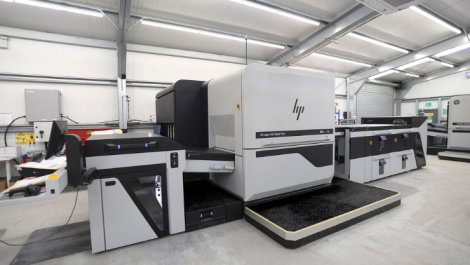LEGO factory in Lavis, Italy
The Dolomite mountains provided a backdrop as dramatic as the changes to the European book market discussed at a Xerox-organised summit, reports Sean Smyth.
In March Xerox arranged a two-day forum on the European book sector. The event was held at the premises of L.E.G.O. (Legatoria Editoriale Giovanni Olivotto), an Italian book printer that must enjoy some of the finest views of any print company. The spectacular Dolomite mountains provided a dramatic backdrop for the nearly 100 attendees from major publishers and printers across Europe, which included several prominent UK faces. A series of presentations discussed the future of book printing and publishing and the host provided a tour of its own digital printing facilities.
Xerox opened the event with a presentation of its strategy to serve the book market with a range of new presses including its first sheetfed inkjet press. Smithers Pira data shows the traditional book printing sector is shrinking in Europe. The good news is that this is not solely due to falling demand. Rather there has been a reduction in the production of books that won’t be sold. New titles are being printed in lower quantities while the number of titles remaining in print is rising due to the ability to print single copies or very short runs on demand. Both these trends are enabled by the adoption of digital printing including high speed inkjet presses integrated with book finishing modules.
Lower volume but higher value
Matthew Baldwin of PWC, who previously worked at Europe’s biggest book printer CPI Group, explained the rationale behind that firm’s decision to invest in inkjet. The major drivers were to improve the service offered to publishers and improve its own profitability. CPI now prints some 10% of its books digitally, accounting for over a quarter of the revenue.
Stéphane Montouchet, chief executive of Ad’mission, covered the issues facing French book publishers as high street bookstores lose their hold on book distribution in a falling market. He also highlighted the opportunities of digital production allowing publishers to avoid out-of-stock situations.
From the bookshop to the shop floor
The L.E.G.O. group is a high quality book printing company that has been in business for over 100 years. Turnover is €103 million and it produces a total of 100 million books annually. It has three production sites with 600 employees. Conventional equipment includes seven Timson web presses and four B1 Komori sheetfed machines.
It has been printing digitally for 15 years, using continuous and cut sheet mono engines. Digital was a small department within a larger business unit until the company split the operation into a separate company, LEGO Digit.
Owner Guilio Olivotto said that the philosophy of digital is different to analogue book printing and so needed a different approach to provide new services to customers. LEGO Digit offers a print on demand service for publishers, providing automatic stock replenishment systems delivering into the distribution chain to eliminate out-of-stock occurrences and potential missed sales. Runs lengths are from 100 upward with an average of 300 copies. The digital operation made a million books in 2015 and had a turnover €2.7 million.
The digital operation is housed in humidity controlled premises beside the main building. There it runs two Xerox inkjet presses, a four-colour 474 mm print width iCompact 24, which was installed in 2013 and a second mono line, which was added the following year. An iGen4 toner press is used for covers, short run colour books and colour plates.
Sophisticated workflow batches jobs to minimise paper changes. A limited range of standard offset litho uncoated book papers with two tints – white or cream – in three weights: 70, 80 and 90 gsm, are used for all bar one client, which requires a specialist inkjet material from Crown van Gelder.
The Impika iCompact presses can run at up to 120 m/min. Both have in-line integrated finishing. After printing the web runs into a Hunkeler CS6 sheeter, sheets then move into two MB Bäuerle CAS52 folders, the sections are gathered and delivered into Mecannotechnica Aster sewers, delivering sewn blocks for end papering and casing in. For perfect binding the sewn blocks have the backs trimmed.
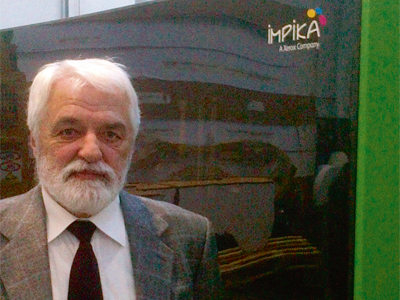
Giulio Olivotto, owner of LEGO
More choice with less waste
Book markets are broad. Religious, educational and pop-up children’s books co-exist with coffee-table and mass market titles. Publishing dynamics for each sector are changing as business models develop. There are also new markets outside the traditional publisher’s remit such as the burgeoning self-publishing sector that is largely enabled by digital print. There can be crossovers too, E L James self-published ‘Fifty Shades of Grey’ before Random House signed her and enjoyed sales of some 125 million books.
Although book volumes are down there are many more titles in print and the market is by no means in a terminal decline. The adoption of digital print means short to medium runs are economical and much of the decline is simply not printing books that do not sell – which is good news for all parties across the supply chain.
About the event
The European Book Event – the next chapter was held from 16 – 18 March 2016, in Verona, Italy. Organised by Xerox it was sponsored by CP Bourg, D&K, Hunkeler, Antalis and Mecannotechnica.
A new philosophy for Russian publishing
Moscow based T8 Publishing Technologies also spoke at the event. Owner Boris Makarenkov explained how the company’s philosophy is changing the Russian publishing sector through the adoption of inkjet book printing. Market developments, including falling demand and increased financing costs, caused casualties among book wholesalers. As a publisher T8 found it difficult to buy in the low quantities it required, so it decided to move into printing itself. It prints exact quantities on demand, providing print and distribution services and has partnered with Ingram to offer nine million titles. T8 says customers reduce working capital requirements by 30-35% by removing stock and storage costs, while boosting sales from the long tail of titles.
Additionally it is developing new markets including self-publishing for which it offers an on-line portal to smooth the process for authors to produce their books. One innovation in reaching potential customers was attending a Philosophy Society meeting. Of the 10,000 attendees 9000 said they would like to publish their book, many of which are already written.
The company got up to speed in a very short time, taking just three months from the January 2015 installation. After a year with Xerox inkjet equipment T8 prints 400,000 books per month, employing 12 people in the print facility. It has strong growth plans, including distribution across the country outside Moscow and St Petersburg.
